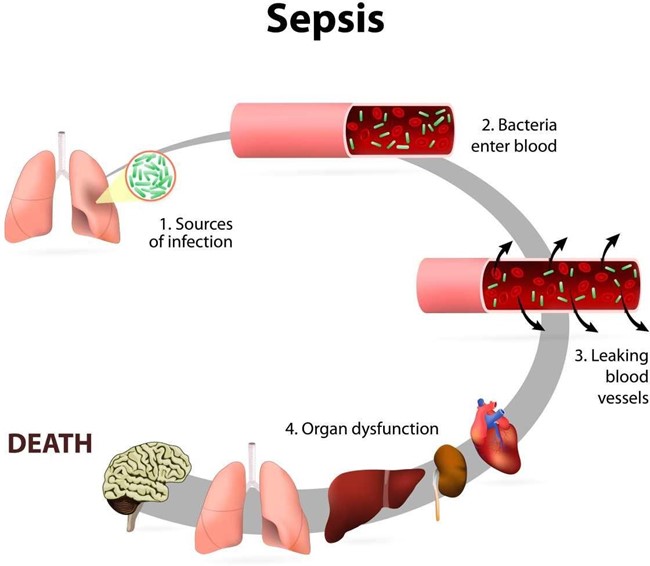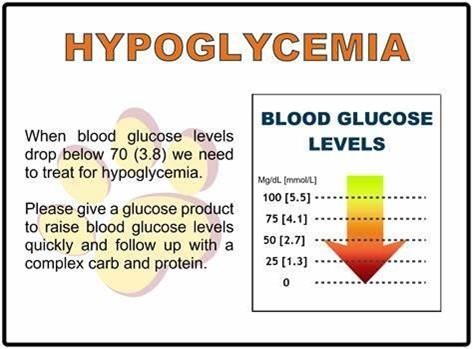Which of the following would the nurse expect to assess in a newborn who develops sepsis?
Increased urinary output
Hypothermia
Wakefulness
Interest in feeding
The Correct Answer is B
Choice A) Increased urinary output: This is not a sign of sepsis in newborns. In fact, sepsis can cause reduced urinary output due to poor blood flow to the kidneys and dehydration.
Choice B) Hypothermia: This is a sign of sepsis in newborns. Sepsis can cause changes in temperature, often fever, but sometimes low temperature. Hypothermia can indicate a severe infection that affects the body's ability to regulate its temperature.
Choice C) Wakefulness: This is not a sign of sepsis in newborns. Sepsis can cause reduced activity and lethargy due to inflammation and organ dysfunction.
Choice D) Interest in feeding: This is not a sign of sepsis in newborns. Sepsis can cause reduced sucking and difficulty feeding due to poor appetite, nausea, vomiting, and abdominal distension.

Nursing Test Bank
Naxlex Comprehensive Predictor Exams
Related Questions
Correct Answer is C
Explanation
Choice a) D5W intravenously is incorrect because this is not the preferred method of feeding for a hypoglycemic infant. D5W stands for dextrose 5% in water, which is a solution that contains glucose and water. It can be used to treat hypoglycemia by providing a source of energy and fluid to the infant. However, it has several disadvantages, such as requiring an invasive procedure, increasing the risk of infection, causing fluid overload or electrolyte imbalance, and stimulating insulin secretion, which can lead to rebound hypoglycemia. Therefore, D5W intravenously should be reserved for severe cases of hypoglycemia that do not respond to oral or enteral feeding.
Choice b) Formula via nasogastric tube is incorrect because this is not the first-line option of feeding for a hypoglycemic infant. Formula is an artificial substitute for breast milk that contains nutrients and calories to support the infant's growth and development. It can be given via nasogastric tube, which is a tube that passes through the nose and into the stomach, when the infant cannot suck or swallow effectively. However, formula has several disadvantages, such as being less digestible, less immunogenic, and less adaptable than breast milk, as well as increasing the risk of necrotizing enterocolitis, allergy, or infection. Therefore, formula via nasogastric tube should be used only when breast milk is unavailable or contraindicated.
Choice c) Breast milk is correct because this is the best and most recommended type of feeding for a hypoglycemic infant. Breast milk is the natural and optimal food for infants that contains all the nutrients and antibodies they need to grow and thrive. It can be given directly from the breast or expressed and fed by bottle or cup. Breast milk has several advantages, such as being easily digestible, enhancing immune function, promoting bonding, and adjusting to the infant's needs. Breast milk also contains lactose, which is a natural sugar that can raise the blood glucose level of the infant without causing a spike in insulin secretion. Therefore, breast milk should be offered to the hypoglycemic infant as soon as possible after birth and at regular intervals thereafter.
Choice d) Glucose water in a bottle is incorrect because this is not an appropriate type of feeding for a hypoglycemic infant. Glucose water is a solution that contains glucose and water. It can be given by bottle or cup to provide a quick source of energy to the infant. However, it has several disadvantages, such as providing no other nutrients or calories, interfering with breastfeeding, causing diarrhea or dehydration, and stimulating insulin secretion, which can lead to rebound hypoglycemia. Therefore, glucose water in a bottle should be avoided or used sparingly for mild cases of hypoglycemia that do not respond to breast milk.

Correct Answer is D
Explanation
Choice a) We are protecting the infant from our bacteria is incorrect because this is not the main reason why gloves are needed when handling a newborn. While it is true that newborns have immature immune systems and are susceptible to infections, gloves are not only used to protect the infant from our bacteria but also to protect ourselves from the infant's body fluids and secretions, which may contain pathogens or blood-borne diseases.
Therefore, this response is incomplete and misleading.
Choice b) Amniotic fluid and maternal blood pose risks to us is incorrect because this is also not the primary reason why gloves are needed when handling a newborn. While it is true that amniotic fluid and maternal blood may contain harmful microorganisms or viruses that can infect us, gloves are not only used to protect ourselves from these substances but also to protect the infant from our skin flora and potential contaminants, which may cause skin irritation or infection. Therefore, this response is also incomplete and misleading.
Choice c) It is hospital policy is incorrect because this is not a sufficient or satisfactory reason why gloves are needed when handling a newborn. While it is true that wearing gloves may be a hospital policy or protocol, this response does not explain the rationale or evidence behind this policy and may imply that the nurse does not understand or agree with it. Therefore, this response is vague and unprofessional.
Choice d) It is part of standard precautions is correct because this is the best and most accurate reason why gloves are needed when handling a newborn. Standard precautions are a set of guidelines and practices that aim to prevent the transmission of infections in healthcare settings. They include wearing gloves, gowns, masks, and eye protection when there is a risk of exposure to blood or body fluids, as well as washing hands before and after patient contact, cleaning and disinfecting equipment and surfaces, and disposing of waste properly. Standard precautions apply to all patients, regardless of their diagnosis or infection status, and are based on the principle that all blood and body fluids are potentially infectious. Therefore, this response is clear and appropriate.
Whether you are a student looking to ace your exams or a practicing nurse seeking to enhance your expertise , our nursing education contents will empower you with the confidence and competence to make a difference in the lives of patients and become a respected leader in the healthcare field.
Visit Naxlex, invest in your future and unlock endless possibilities with our unparalleled nursing education contents today
Report Wrong Answer on the Current Question
Do you disagree with the answer? If yes, what is your expected answer? Explain.
Kindly be descriptive with the issue you are facing.
